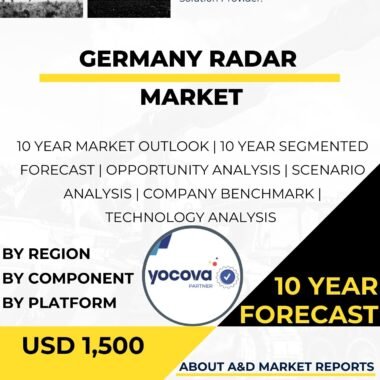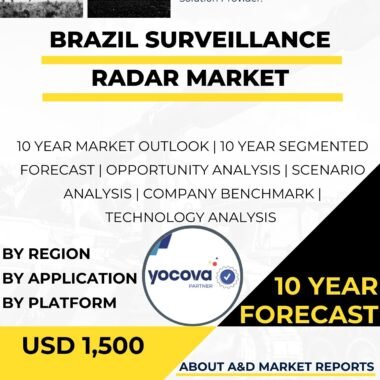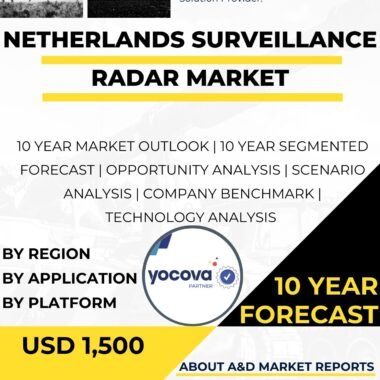Description
The South Korea surveillance radar market is a critical and expanding segment of the country’s defense industry, providing advanced radar systems that play a pivotal role in enhancing the nation’s air defense, border surveillance, maritime security, and situational awareness capabilities. Surveillance radars are essential for detecting and tracking aircraft, ships, missiles, and other aerial and maritime targets, enabling real-time monitoring and response to potential threats. South Korea’s focus on indigenous development, strategic partnerships, and technological innovation has positioned it as a notable player in the global surveillance radar market.
Surveillance radars are integral to modern defense systems, offering long-range coverage and high-resolution tracking of airborne and maritime assets. These radars form the backbone of air defense networks, providing critical intelligence, surveillance, and reconnaissance (ISR) capabilities, enhancing situational awareness, and supporting military operations.
Indigenous development has been a cornerstone of South Korea’s approach to the surveillance radar market. The country’s defense industry, represented by companies like Hanwha Systems and LIG Nex1, has made significant strides in developing advanced radar systems tailored to meet the specific requirements of the South Korean military.
The South Korean military heavily relies on surveillance radars to protect its airspace, monitor North Korean activities, and safeguard territorial waters. These radars are deployed at key military installations, along coastlines, and on naval vessels, providing vital early warning and surveillance capabilities.
Beyond defense applications, surveillance radars also have civilian uses in South Korea. Air traffic control radars ensure safe and efficient air traffic management, while coastal surveillance radars support maritime security and monitoring of marine activities.
South Korea’s commitment to innovation and research and development (R&D) has driven advancements in surveillance radar technology. The country invests in R&D programs to improve radar sensitivity, signal processing capabilities, and integration with other sensor systems. Technological improvements focus on enhancing radar range, accuracy, and target identification capabilities.
Strategic partnerships with international defense and technology companies have also contributed to South Korea’s surveillance radar capabilities. Collaborations enable technology transfer, joint research, and the integration of foreign radar systems into South Korea’s indigenous platforms, enriching the overall surveillance radar capabilities of the country’s defense industry.
To ensure optimal utilization and proficiency in operating surveillance radars, South Korea places significant emphasis on training and skill development for its military and air defense personnel. Training programs focus on familiarizing operators with radar operation, target classification, and effective utilization in various operational scenarios.
Moreover, safety and reliability are paramount considerations in the surveillance radar market, given the critical role of radars in air defense and maritime security. South Korea adheres to stringent safety regulations and radar maintenance standards to ensure the reliability and performance of surveillance radars, minimizing the risk of equipment failure and ensuring continuous surveillance coverage.
In conclusion, the South Korea surveillance radar market is a critical aspect of the country’s defense capabilities. Indigenous development, strategic partnerships, and innovation have allowed South Korea to create advanced surveillance radars that meet the specific needs of its military and contribute to enhancing its national security. From protecting airspace to monitoring maritime activities, surveillance radars play a pivotal role in strengthening South Korea’s defense and safeguarding its territorial integrity. As the defense industry continues to evolve, South Korea’s dedication to advancing its surveillance radar technology will remain essential in maintaining its position as a major player in the global surveillance radar market.




